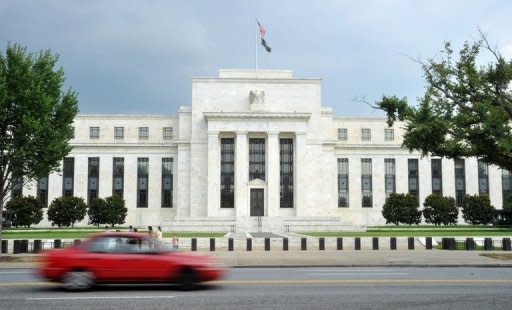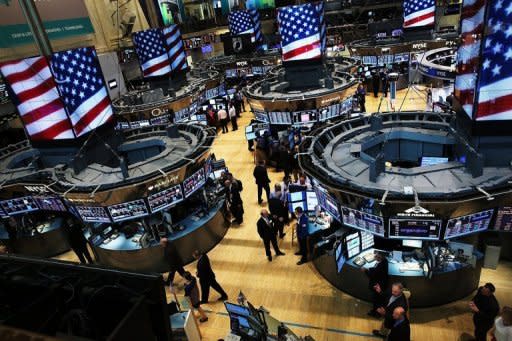Fed maintains bond-buying program amid 'modest' growth
The US Federal Reserve left unchanged near-zero interest rates and its massive bond-buying program on Wednesday, citing modest growth in the world's largest economy. Wrapping up a two-day policy meeting, the Federal Open Market Committee (FOMC) said it would continue to buy $85 billion in bonds per month to help tamp down longer term interest rates that have been supporting the economy, and especially the housing market recovery. The bond-purchase program has filled a gap in the Fed's toolkit after the central bank slashed its key federal funds rate to 0-0.25 percent in December 2008 and held it there. While no one expected a rate hike at the meeting, analysts were surprised the FOMC statement provided no signal on when, and how, the Fed will begin to taper its asset purchases. Many analysts believe the move will come at the Fed's September 17-18 meeting, but some say it will be delayed because of patchy growth. "September tapering still a good bet, but the incoming data still matter," said Ian Shepherdson of Pantheon Macroeconomics. Earlier in the day the government reported the US economy grew at a lackluster 1.7 percent annualized pace in the second quarter after 1.1 percent growth in the first quarter. Pointing to growth "at a modest pace during the first half of the year," the FOMC said it would keep buying mortgage-backed securities at a monthly pace of $40 billion and longer-term Treasury securities at $45 billion. Reinvesting the mortgage-backed securities and rolling over maturing Treasury securities, the panel reiterated, "should maintain downward pressure on longer-term interest rates, support mortgage markets, and help to make broader financial conditions more accommodative." The Fed policymakers appeared a little less optimistic about the economy than they were at their June 18-19 meeting. In their prior statement, the economy was described as expanding at "a moderate pace," stronger language than "modest." Though the FOMC largely repeated the previous statement, mentioning an improving jobs market and housing sector, this time Fed officials noted "mortgage rates have risen somewhat." Interest rates jumped after Fed Chairman Ben Bernanke said in June the central bank could taper bond purchases later this year and end the program by mid-2014 if the economy continued to improve. The rate increases have raised concerns that higher mortgage rates could snuff out the housing sector recovery. The new FOMC statement made no mention of a tapering timetable, but it highlighted the officials were watching the impact of weak inflation on the economy. Part of the Fed's dual mandate of price stability and maximum employment, the panel acknowledged "that inflation persistently below its 2 percent objective could pose risks to economic performance." It projected inflation would move back toward that target number over the medium term, whereas last time the panel said it "anticipates" inflation "likely will run at or below its 2 percent objective." The Fed reiterated that it would keep its current monetary policy "for a considerable time" after the asset-purchase program ends "and the economic recovery strengthens." The central bank and a number of economists expect growth will pick up in the second half of the year. The Fed repeated that its easy-money monetary policy would be appropriate as long as the unemployment rate remains above 6.5 percent and longer-term inflation remains no more than 2.5 percent. But it again emphasized that it would keep the policy until the outlook for the labor market had improved "substantially" in a context of price stability. "The Fed appears to somewhat regret beginning the taper discussion last month. We continue to think that the Fed is more likely to wait until early 2014," said Paul Edelstein of IHS Global Insight. But a tapering could still happen later this year, he said, adding the July jobs report, due on Friday, will be "instructive." The government is expected report the unemployment rate ticked down to 7.5 percent in July from 7.6 percent in June, still well above the Fed threshold. The US Federal Reserve building is seen on August 9, 2011 in Washington, DC. The US Federal Reserve left unchanged near-zero interest rates and its massive bond-buying program on Wednesday, saying growth was modest in the world's largest economy. Traders work on the floor of the New York Stock Exchange during afternoon trading on July 31, 2013 in New York City. Wrapping up a two-day policy meeting, the Federal Open Market Committee (FOMC) said it would continue to buy $85 billion in bonds per month to help tamp down longer term interest rates that have been supporting the economy, and especially the housing market recovery.

